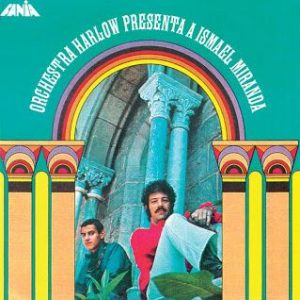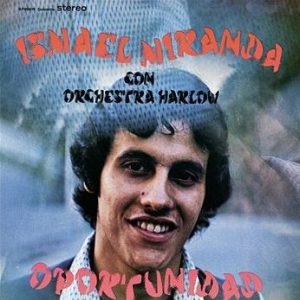This post is also available in:
 Español
Español
Ismael Miranda, “El Nino Bonito” (the pretty boy) of Salsa, is approaching 55 years of a very illustrious career in Latin music.
The phrase “lo importante no es llegar, sino mantenerse” (the important thing is not to make it, but to stay there) applies perfectly to “Maelo”. I have admired Ismael Miranda not only because he’s an impeccable dresser, but also because of how he’s maintained an impeccable career throughout all these years.
We know Ismael Miranda mostly for his great Salsa hits. Some will admire the excellent boleros he adds to his recordings. But Ismael is much more versatile than that, having started in the boogaloo era (with Joey Pastrana) and going beyond Salsa to record Gospel (Christian) music and Puerto Rican Christmas music.
There are a lot of hits in a Latin music career that accounts for 42 recordings. Yet, Ismael’s determination and intuition have served him well in reaching and maintaining his status in Latin music.
Let’s remember Ismael Miranda’s career, and it all starts…well, at the beginning.
The Harlow-Miranda Years
Ismael Miranda first recorded with boogaloo king Joey Pastrana while still a teenager. However, he really came to the public spotlight when he joined Larry Harlow’s Orchestra Harlow. Harlow had a fascination for Cuban music, and Ismael’s early style was greatly influenced by the Cuban singers of the late 60s.

When you listen to Ismael’s early recordings with Orchestra Harlow, you can hear things like “caballero“, and “bele-bele-ben, bele-ben”. These phrases were popularized by the great Cuban singer Benny Moré. Many singers imitated Benny for years, and then it became the trend among the New York “soneros“.
Harlow and Ismael Miranda immediately formed a perfect team in the Salsa music scene. Ismael could sing the “son” and “boleros” as well as anyone in Salsa. He had a polished, powerful, and clear voice, as well as a good sense of the clave. Meanwhile, Larry Harlow had visited Cuba during the 50s for long stays to study Cuban music.
Harlow based his musical style on the Cuban “son“, adding a Cuban “tres” to his band. Additionally, he gave his band a broader sound by combining the trumpets found in a typical “conjunto” with trombones.
Miranda’s good looks and charisma on and off stage, won him many admirers. This helped to skyrocket his and Harlow’s popularity. Harlow is a Latin music genius of his own, and like in so many cases, it’s hard to determine which came first, the chicken or the egg. But one thing we do know is that this combination exploded the Salsa music scene.
Ismael Miranda Salsa Hits with Orchestra Harlow
With Orchestra Harlow, Ismael Miranda had many hits. Early on he started with “El Exigente“, a boogaloo hit song for the 1967 album of the same name. If you are doing the math, that was almost 56 years ago.
However, my favorite Ismael Miranda hit from “Orchestra Harlow Presents Ismael Miranda” (1968) was “La Contraria“. In the next album, “Me and My Monkey” (1969), my favorites were “Jóvenes del Muelle” and “El Malecón“. That album was followed by “Electric Harlow” (1970) which had “Guasasa” and “La Revolución“. This last song came out when there were several revolutionary movements around the world. Salvador Allende’s leftist party won in Chile, the Vietnam war had occurred through 1968, the Civil Rights revolution was still ongoing, and the Beatles song “Revolution” was also released.
Three Great Miranda-Harlow Salsa Albums
Next came one of several of my favorite Harlow salsa albums; “Tribute to Arsenio Rodriguez” (1971). Yomo Toro played the Cuban “tres” in this album, which had several great remakes of the great Cuban “tresero” songs. The title song, “Arsenio” was written by Ismael. “Tumba y Bongó“, “Suéltala” and “A Todos los Barrios” were just great songs that made this tribute a classic.

The next two recordings, both released at different stages in 1972, really propelled Ismael Miranda to definite stardom. The album “Abran Paso” was a fantastic album with my favorites “Abran Paso“, “Se Casa la Rumba“, and “Donde Llevas El Son“. Additionally, it had the fantastic boleros “Ayer Me Enteré” and “Abandonada Fue“.
These albums set up the stage for “Oportunidad“, released later in 1972. This album served as a precursor to Ismael Miranda’s launch as a solo artist. Ismael appeared solo on the album cover, as supposedly Larry Harlow was experimenting with other music projects at the time. The story has it that he left his band and the album for Ismael to shine.
This album was perhaps the best release of Ismael Miranda with Orchestra Harlow. I loved the songs “Yambu Pa’ Gozar“, “Las Mujeres Son“, “Senor Sereno“, “La Oportunidad“. Additionally, it had “Todo de Mi“, another excellent bolero.
Ismael Miranda Goes Solo
With this masterpiece, and his inclusion in the Fania All-Stars for the historic 1972 Salsa music album “Live at The Cheetah“, Ismael Miranda was ready to go solo. In Part 2 of this series, we’ll discuss the early solo career of Ismael Miranda.


[…] 1973 was full of evolution and changes. Larry Harlow had just lost his charismatic lead singer, Ismael Miranda, who started his solo career. Ismael formed his Orquesta Revelacion and released the Salsa music […]
[…] very nice Christmas album of Puerto Rican folk music, Salsa music icon Ismael Miranda delivers positive and spiritual messages in “La Mano […]
[…] Ismael Miranda wrote this song for his 1975 album “Este es Ismael Miranda“. It’s a heart-felt song performed in top of a smooth son-montuno. I don’t have the information of who arranged the song, but seems to be the work of Jorge Millet, the main arranger of the album. […]